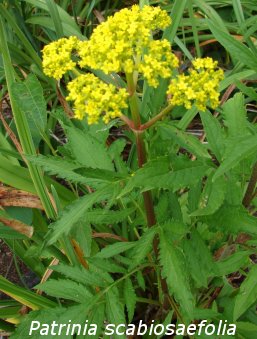|
|
Reported1
Hosts
of
Puccinia
hemerocallidis
Spermogonial/aecial hosts:
Patrinia gibbosa
Patrinia
rupestris
2
Patrinia scabiosaefolia
Patrinia triloba
Patrinia villosa
Uredial/telial hosts:
Hemerocallis
aurantiaca
5
Hemerocallis
citrina
3
Hemerocallis
dumortieri
5
Hemerocallis esculenta
Hemerocallis fulva
5
Hemerocallis fulva
var.
disticha
Hemerocallis fulva
var.
kwanso
Hemerocallis fulva
var.
littorea
Hemerocallis fulva
var.
longituba
Hemerocallis fulva
var.
sempervirens
Hemerocallis
lilioasphodelus
4
Hemerocallis
middendorfii
4
Hemerocallis
minor
2,4
Hemerocallis thunbergii
Hemerocallis
yezoensis
Dianella
tasmanica5,8,9
While
Dianella
tasmanica has been confirmed as a host of Puccinia hemerocallidis
in Florida, attempts to infect daylily with rust from Dianella
and vice versa have not been successful according to reference 9 below.
Dianella tasmanica is a member of the daylily family,
Hemerocallidaceae.
The
hosta species below have also been listed as hosts of the uredial/telial
stage of daylily rust, but rust on hostas in Japan has since been
demonstrated as Puccinia funkiae, and is not the same
as daylily rust, Puccinia hemerocallidis.
Please see the note below.
Hosta
albomarginata
Hosta kikutii
var.
kikutii
Hosta kiyosumiensis
Hosta longipes
Hosta
rectifolia
4
Hosta sieboldiana
var.
sieboldiana
It
should be noted that, at least in the case of hosts listed in
the Rust Flora of Japan, the information is compiled from published
papers and not necessarily confirmed by specimen-based studies
or inoculation experiments. This list includes species
reports only and does not include cultivated Hemerocallis
cultivars, which vary in their susceptibility.
Dr. Y. Ono in Japan
has
confirmed experimentally that the rust observed on
Hosta
in Japan is a different species of rust fungus,
Puccinia funkiae, although
both hosta rust and daylily rust share
Patrinia villosa as
alternate host
6,7.
1
Unless marked otherwise, all plants are listed
as hosts of
P. hemerocallidis
in Japan by Hiratsuka, N., Sato, T., Katsuya,
K., Kakishima, M., Hiratsuka, Y., Kaneko, S.,
Ono, Y., Sato, S., Harada, Y., Hiratsuka, T.,
and Nakayama, K. 1992. The Rust Flora of
Japan. Tsukuba Shuppankai, Ibaraki,
Japan. Pages
710-711.
2
Mentioned as a host other than in Japan by
Hiratsuka, N., Sato, T., Katsuya, K.,
Kakishima, M., Hiratsuka, Y., Kaneko, S., Ono,
Y., Sato, S., Harada, Y., Hiratsuka, T., and
Nakayama, K. 1992. The Rust Flora of
Japan. Tsukuba Shuppankai, Ibaraki,
Japan. Pages
710-711.
3
Zhou Maofan, Bao Difu, Zhao Chunsen et al.
(editors). 1998. Atlas of Diseases and Pests
of Medicinal Plants in China. Hubei Scientific
and Technological Press. Wuhan, Hubei, China.
pages
198-199.
4
Azbukina, Z. M., Nauka, Moscow. 1984. Key to
the rust fungi of the Soviet Far
East.
5
Farr, D.F., Rossman, A.Y., Palm, M.E., &
McCray, E.B. (n.d.) Fungal Databases,
Systematic Botany & Mycology Laboratory,
ARS, USDA. Retrieved 2003 and 2014,
from
http://nt.ars-grin.gov/fungaldatabases/
6 Ono,
Y. 2003. Does Puccinia hemerocallidis regularly
host-alternate between Hemerocallis and Patrinia plants in
Japan? J Gen Plant Pathol 69:240-243.
7
Ono. Y. 2005. Plantainlily rust fungus is distinct from daylily
rust fungus. J Gen Plant Pathol 71:99-106.
8
Dixon, L.J. et al. 2009. Phylogenic relationships of sugarcane
rust fungi. Mycol. Progress. DOI 10.1007/s11557-009-0649-6.
9
Florida Dept. of
Agriculture and Consumer Services Annual Report
2008-2009, http://edocs.dlis.state.fl.us/fldocs/doacs/ar/v2008-2009.pdf
<
PREVIOUS HOME
NEXT >
©2002/2014
Susan Bergeron
|